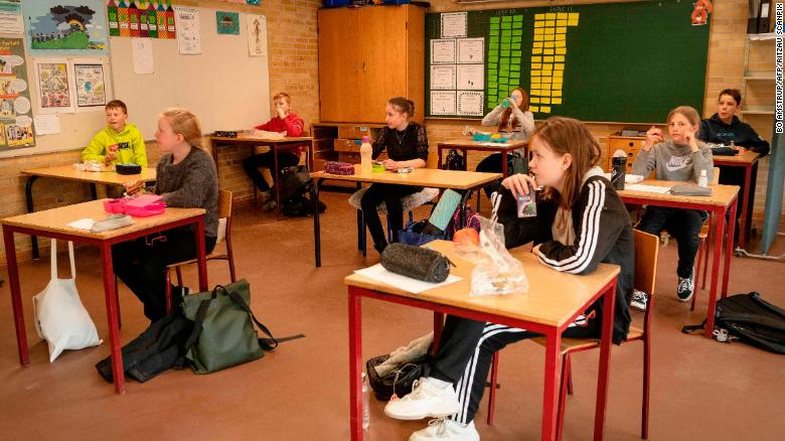
While Danish children with backpacks and nearby parents were returning to school, the situation seemed normal. It seemed so.
Jimmy Skov Glasdam Adetunji, head of secondary education at Hendriksholm School in Rodovre, at the exit of Copenhagen, spent Wednesday inspecting each classroom to make sure all 440 students were at least two meters apart.
He divided the school yard into six sections with red and white stripes and sent parents a detailed diagram explaining arrival times, routes, vacations, and lunches.
"I can't wait for the kids to go back to school," Adetunji said. "But it is necessary to talk about the pandemic, the rules and the yard separated by a police tape. It will be a contract between fun and seriousness. ?
This week, schools across Denmark raised flags to celebrate the return of students. The atmosphere was similar to that of the first day of the school year. And it is the first day of school after a month of pandemic isolation. Denmark was one of the first European countries to close its borders, shops, schools and restaurants and to stop mass gatherings. Now, it is one of the first states to gradually return to normalcy.
Day by day, less sick people appear in hospitals. During March, more than 500 people were diagnosed with coronavirus, but by mid-April, the number had dropped to 353 - unlike other states with an increase in infected people.
To date, 321 people have died, according to the Danish Agency for Infectious Diseases.
The gradual opening of Denmark was announced by Prime Minister Mette Frederiksen a few days ago. Students up to the age of 12 are part of the first phase. Schools must ensure hygiene and the implementation of social distancing to protect students and staff.
The rules set by the government instruct students to be divided into smaller groups, washing their hands every two hours. Surfaces such as sinks, toilets, door locks should be disinfected twice a day.
Also, schools are doing their best to get students to spend as much time outside as possible.





